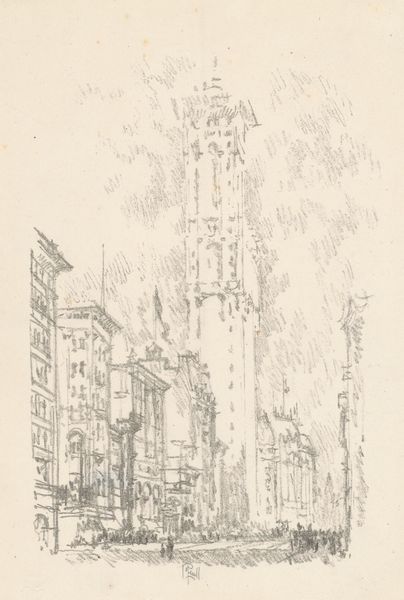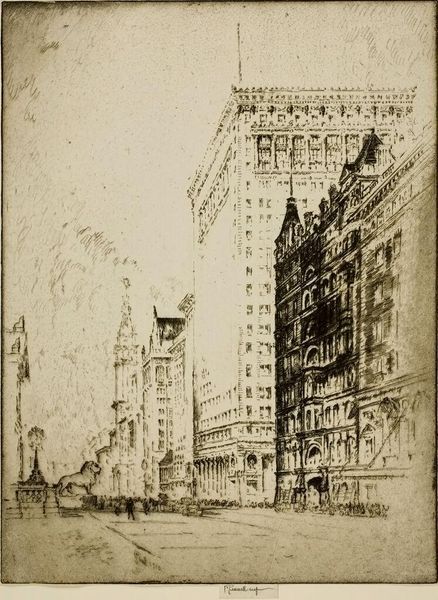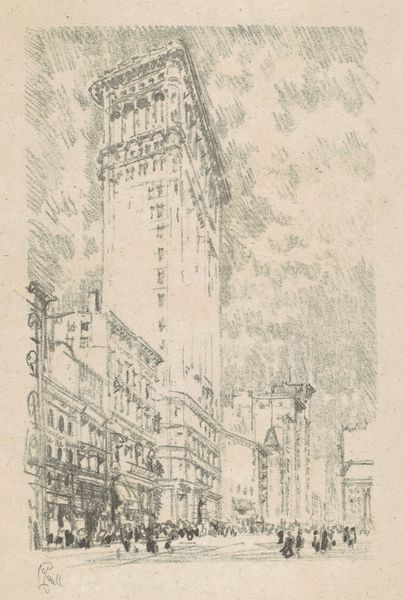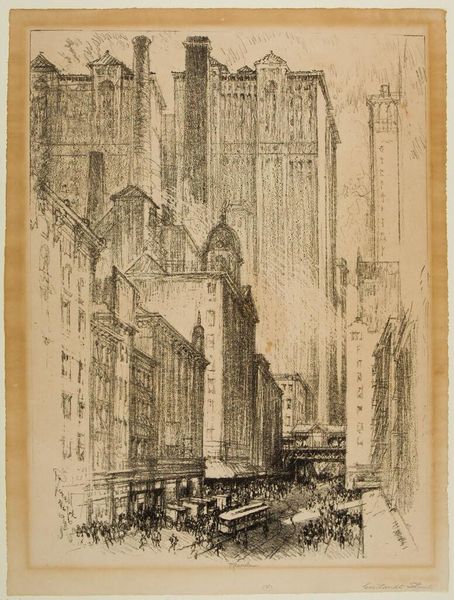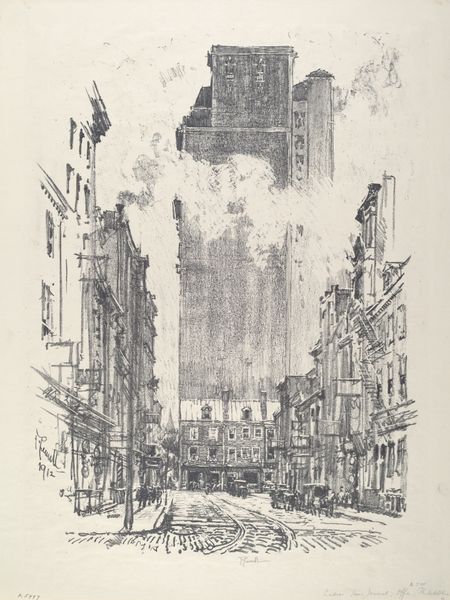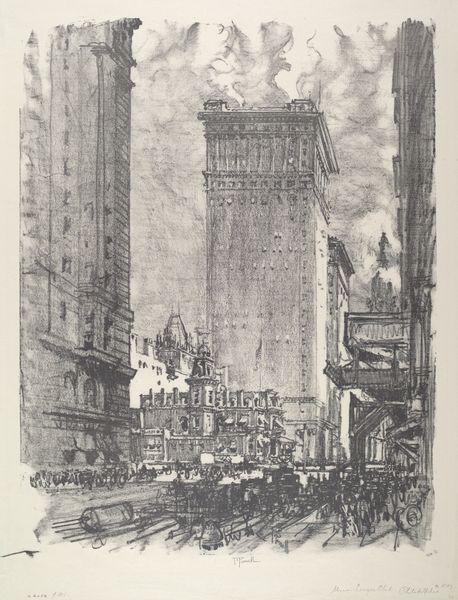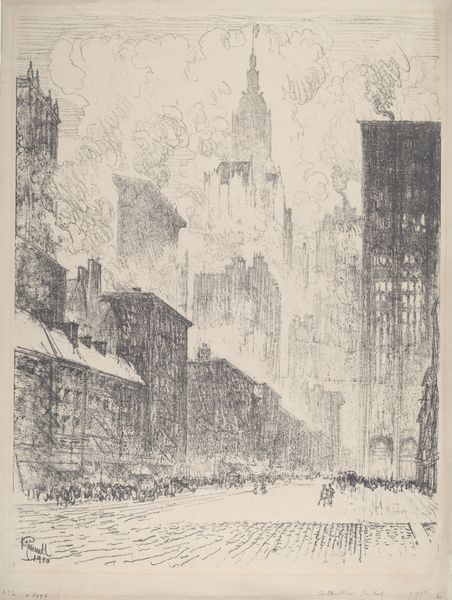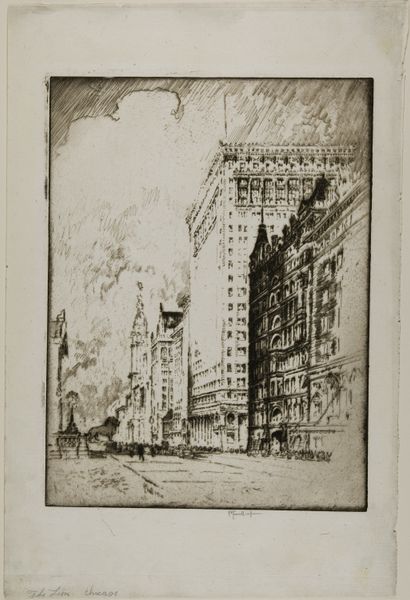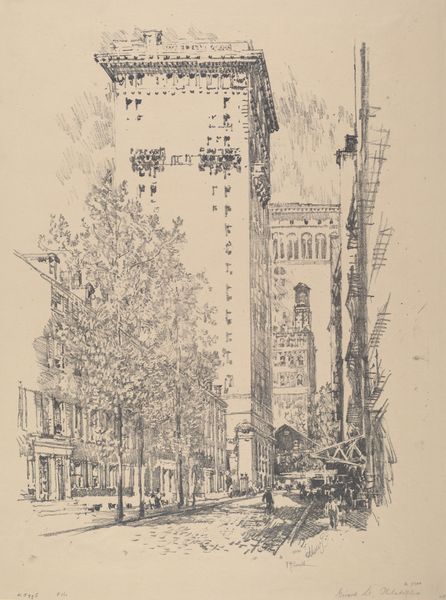
drawing, print, ink
#
drawing
#
art-nouveau
# print
#
ink
#
cityscape
#
realism
Dimensions: 22 x 16 5/8 in. (55.88 x 42.23 cm) (image)24 3/8 x 18 1/2 in. (61.91 x 46.99 cm) (sheet)
Copyright: No Copyright - United States
Curator: The Woolworth Building, rendered in ink as a print by Joseph Pennell around 1912. The city scape makes you think of industry. What captures your attention first in this piece? Editor: Well, the height of the Woolworth Building is emphasized. The method that Pennell uses makes it imposing and impressive, almost romanticized, and how different it looks to the building materials around today. I'm curious to hear how you interpret it. Curator: The medium itself is key here. Etching allows for a certain level of detail but also lends itself to mass production. Consider the social context: early 20th century, rise of skyscrapers, urbanization, booming industry, the print is able to proliferate faster to an emerging middle class through these methods. Editor: That makes sense. So the choice of printmaking makes the artwork part of that very industrialized, modern world it depicts? Curator: Exactly! The ink, the paper, the printing press – these are all products of industry, highlighting how art production and distribution mirror broader economic shifts. Are the themes in this work successful? Editor: The scale and precision definitely communicate power, maybe even a celebration of industry, although at times, I wish the human element was more present. Curator: Perhaps its strength lies in that exact absence, no? The lack of focus on the figures emphasizes the looming, indifferent presence of capital embodied by the architecture itself, which many critics say it loses later as the style matured, but the statement remained consistent throughout Pennell's life. Editor: I see what you mean. The mechanical process of printmaking emphasizing this very notion of industrial prowess, amazing. Curator: Precisely, these works, viewed through the lens of its materiality and means of production, tell us as much about society then as it does about artistic skill, don't you agree? Editor: I do! Thanks, it's shifted my perception entirely.
Comments
No comments
Be the first to comment and join the conversation on the ultimate creative platform.

